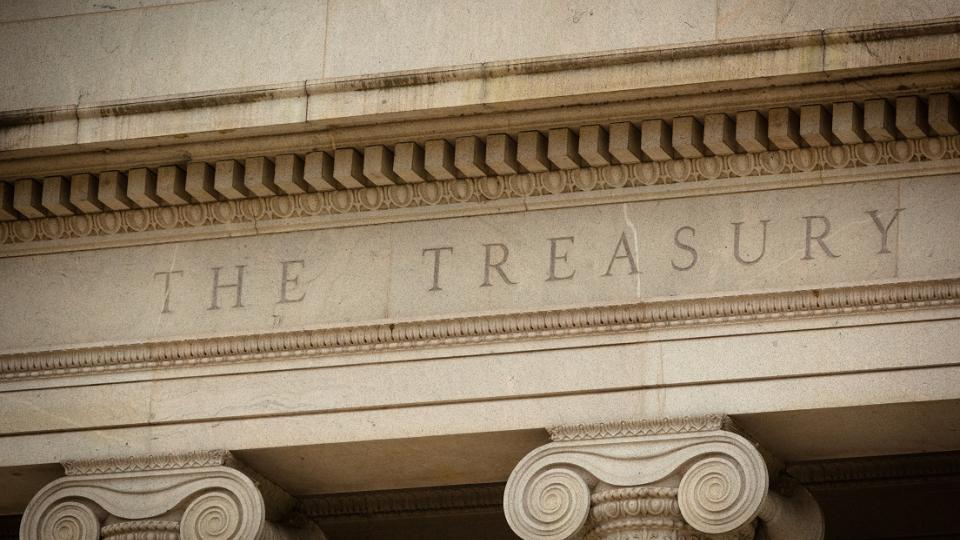
By Keith Wade, Chief Economist & Strategist at Schroders
A major sell-off in bond markets has seen yields hit levels not reached for 15 years or more. We look at the implications and ask if it will cause something to break in the economy.
The past month has seen a sell-off in fixed income markets and a considerable rise in sovereign bond yields around the world. US 10-year yields are touching 4.7%, their highest level since 2007.
Although inflation is still too high for central banks’ comfort, the outlook has not deteriorated over the past month. Instead, the move has been driven by a rise in real yields, the market’s expected level of interest rates after adjusting for inflation (chart 2).
Pinning down exactly what lies behind this is not straightforward, as the real yield measure encompasses a variety of factors. Nonetheless, two seem to be important at this stage.
The first is the recognition that the path of policy rates will be higher than markets had previously thought. The ongoing strength of the US economy and the ditching of recession forecasts has meant that the Federal Reserve (Fed) will have to keep rates higher for longer than expected to cool the economy. In this respect the markets have lost the argument with the Fed, as the dot plot has been consistently above market projections for interest rates for some time. While this is to the Fed’s credit, this explanation only goes so far as policy rates have a diminishing impact as we move further out along the yield curve. One of the key features of the recent bond rout has been a steepening of the yield curve as long yields rose more than short ones.
Consequently, the second factor would seem to reflect concerns over the level of government debt and the increase in bond issuance. Government borrowing surged during the pandemic and has eased back as economies have recovered. However, it has not returned to pre-pandemic levels and is expected to remain above 100% of GDP for the G20 group of countries for the foreseeable future. Concerns have been increased by the fact that the deficit in the US has risen sharply despite the low level of unemployment. Normally, low unemployment rates are associated with low government borrowing, or even a surplus. Today the budget deficit is running at around 7% of GDP with unemployment at just 3.8% (see chart 3). This suggests the underlying or cyclically-adjusted deficit could be 8 or 9% of GDP, close to its levels in the aftermath of the global financial crisis when unemployment was running at 10%.
In addition to the budget deficit the supply of bonds will be increased as the Fed continues to reduce its balance sheet as it unwinds its asset purchase programme from during the pandemic and earlier. We estimate that this amounts to a reduction in demand for bonds of $780 billion over the next year. When combined with the budget deficit, we estimate that investors will be asked to buy $2,730 billion of Treasury bonds net over the coming year, about 10% of GDP and 50% higher than in the past year. These developments on the supply side of the bond markets are increasing the yield investors demand for holding long-dated assets known as the term premium.
Impact on the economy
The increase in sovereign bond yields has pushed rates higher in the credit and mortgage markets resulting in a broad tightening of financial conditions. In this respect the markets are doing the Fed’s job for them. To assess the impact on growth we use the Fed’s Financial Conditions Impulse on Growth index (FCI-G) which we extrapolate forward to pick up the lagged effects of moves in yields and asset prices. This shows that the headwind on GDP growth is set to increase in the coming months as the effects of higher market rates filter through to the economy.
In growth terms this will be equivalent to a one percentage point drag on real GDP growth in 2024. This is largely being driven by the rise in credit spreads, higher mortgage rates and a stronger dollar. The moderation in house prices is also contributing by becoming less of a support for activity.
Of course, this needs to be seen in the context of the ongoing strength of the economy and other forces such as the pick-up in oil prices following the recent tragic events in the Middle East. Nonetheless, there are signs that higher borrowing costs are weighing on consumers with a slowdown in credit card borrowing and small businesses are reporting increased borrowing costs. Overall we would see the rise in bond yields as reinforcing our view that US and global growth will slow further as we go into next year and that the Fed will not tighten policy further in this cycle.
Will something break?
Significant rises in the cost of credit often bring questions about whether something will break in the economy and trigger a greater crisis. Clearly, bond holders will have made significant losses creating a potential need for capital raising. Thankfully there has been no repeat of the problems in the pension fund sector in the UK following the mini-Budget debacle last September. More generally, as significant holders of bonds, the banking sector will have made losses, although again there has been no repeat of the crisis seen earlier this year in the US. This may well reflect the ongoing support for banks from the Fed whose measures have helped restore confidence in the sector.
Higher interest rates will add to the pressure on commercial real estate, but this is not a new problem given the structural issues faced by the sector post-pandemic. A major default may emerge in time as borrowers find they cannot afford to re-finance debt and the maturity wall in credit markets will increase in 2024. However, at this stage the most important implication of the rise in bond yields is the most obvious: the constraint it will put on fiscal policy and governments’ ability to cut taxes or increase spending.
The combination of higher debt levels after the pandemic and higher interest rates means interest payments are set to absorb an increasing proportion of government expenditure. By reducing governments’ room for manoeuvre, this will limit their ability to boost activity going forward and increase the downside risks to growth.
Further reading
- What does the rise in bond yields mean for the economy? by Keith Wade, Chief Economist and Strategist at Schroders.
- Soaring “margin of safety” in bonds boosts their appeal Higher yields boost returns prospects and offer a historically large cushion against potential losses.
- Podcast: Bond market panic - how might investors respond? Alex Funk, CIO of Schroders Investment Solutions, joins the pod to discuss ongoing volatility in bond markets and how investors might react.
- Three key questions on bond investing right now Julien Houdain, Head of Global Unconstrained Fixed Income, discusses the appeal, the pain and the risks in the bond market currently.


